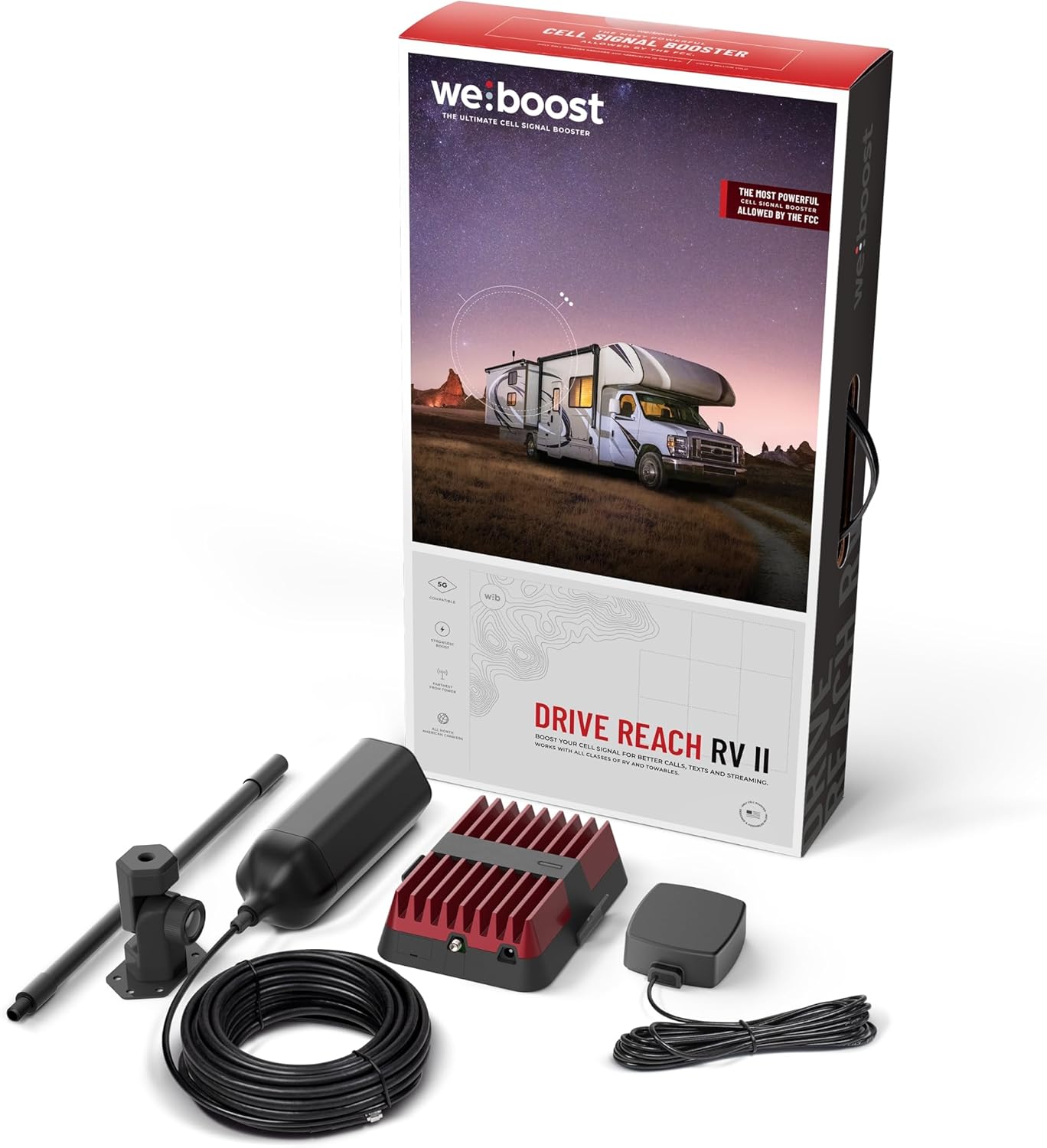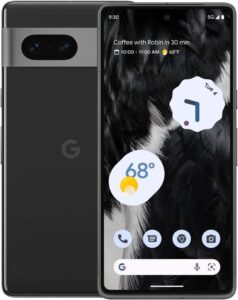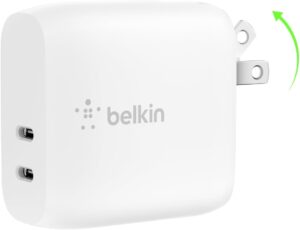







Price: $569.99 - $549.99
(as of Aug 23, 2025 20:50:31 UTC – Details)
Product description


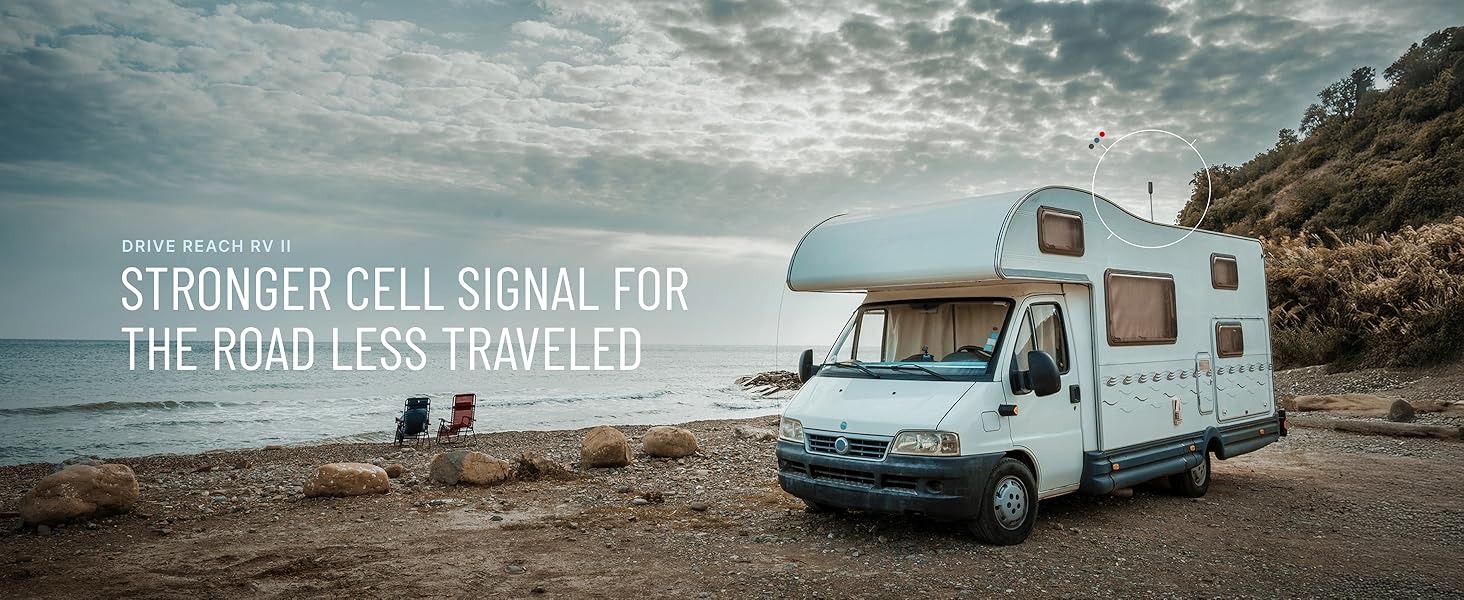

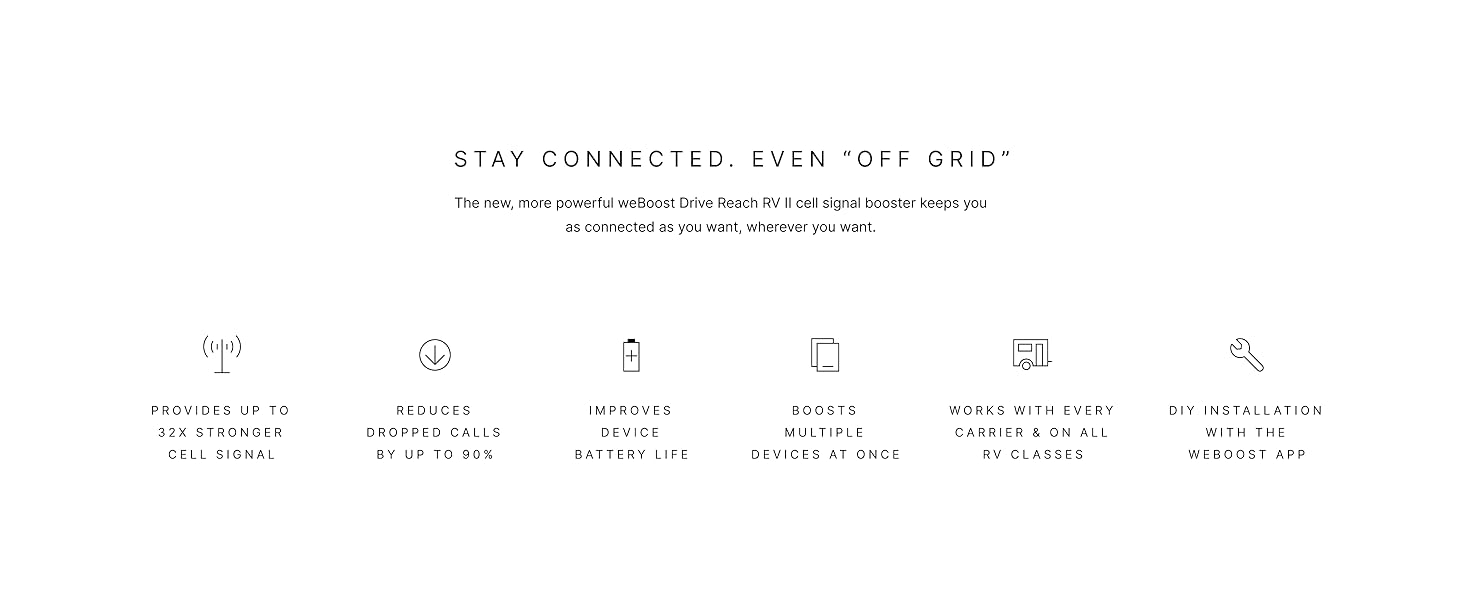

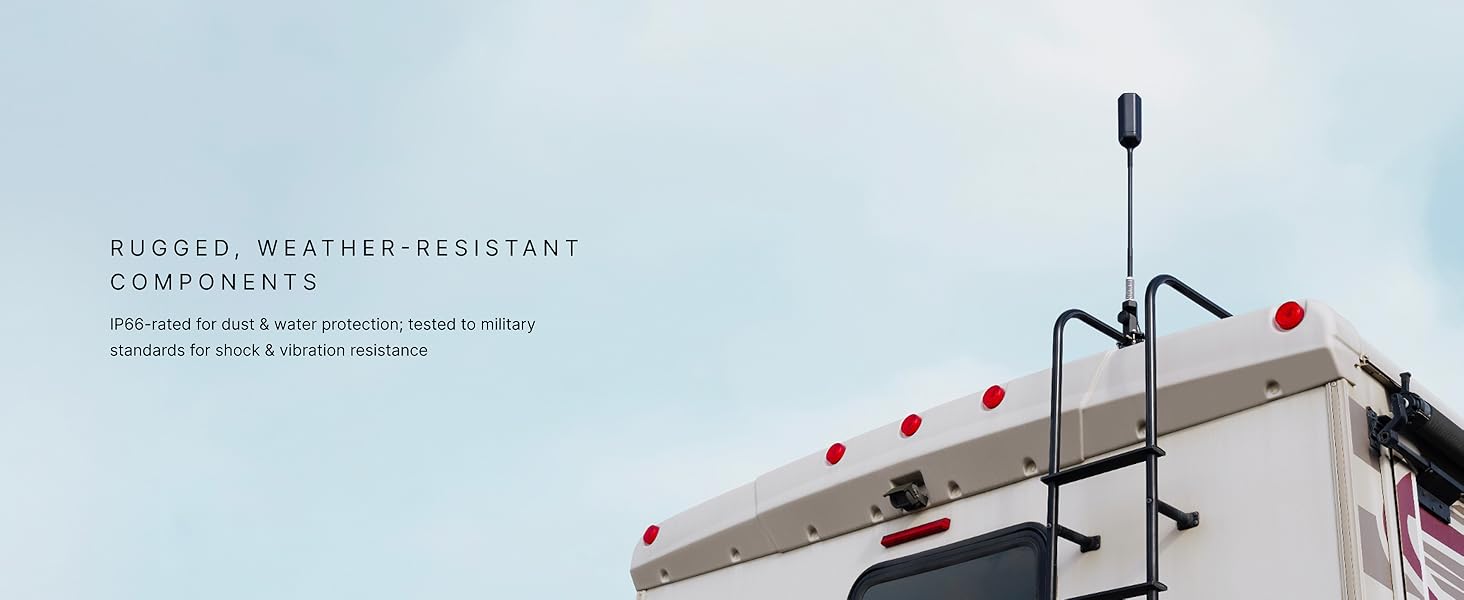
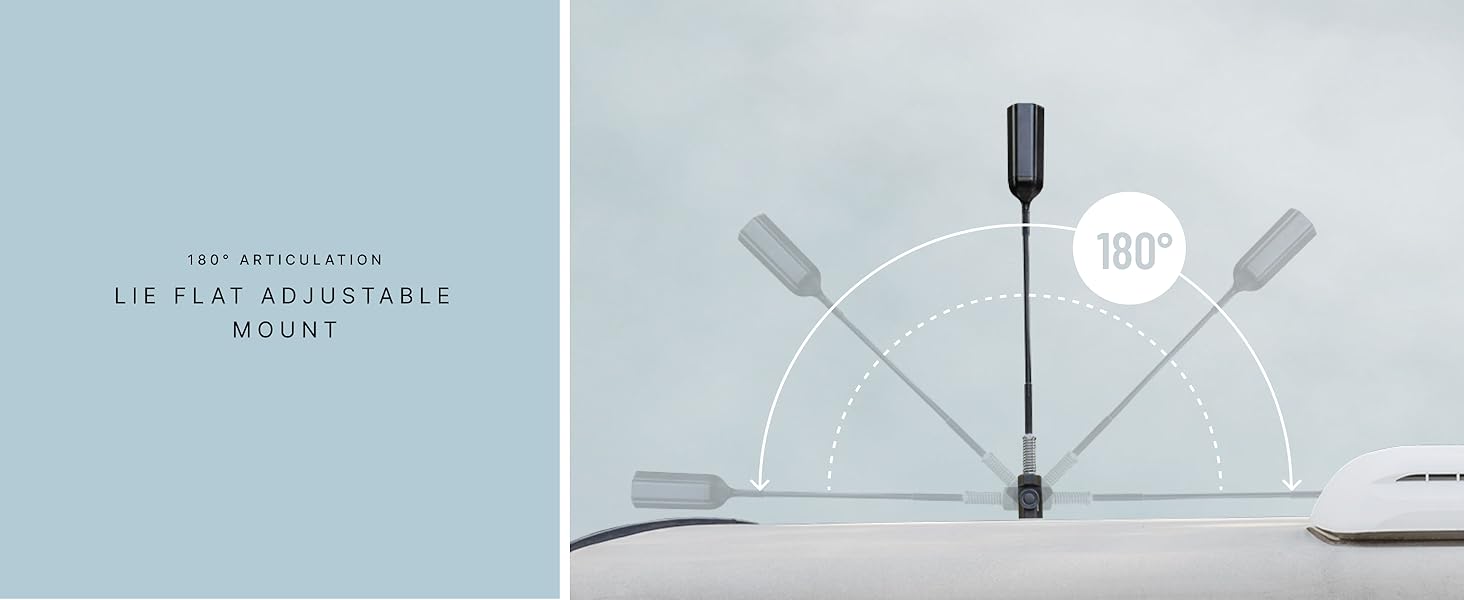
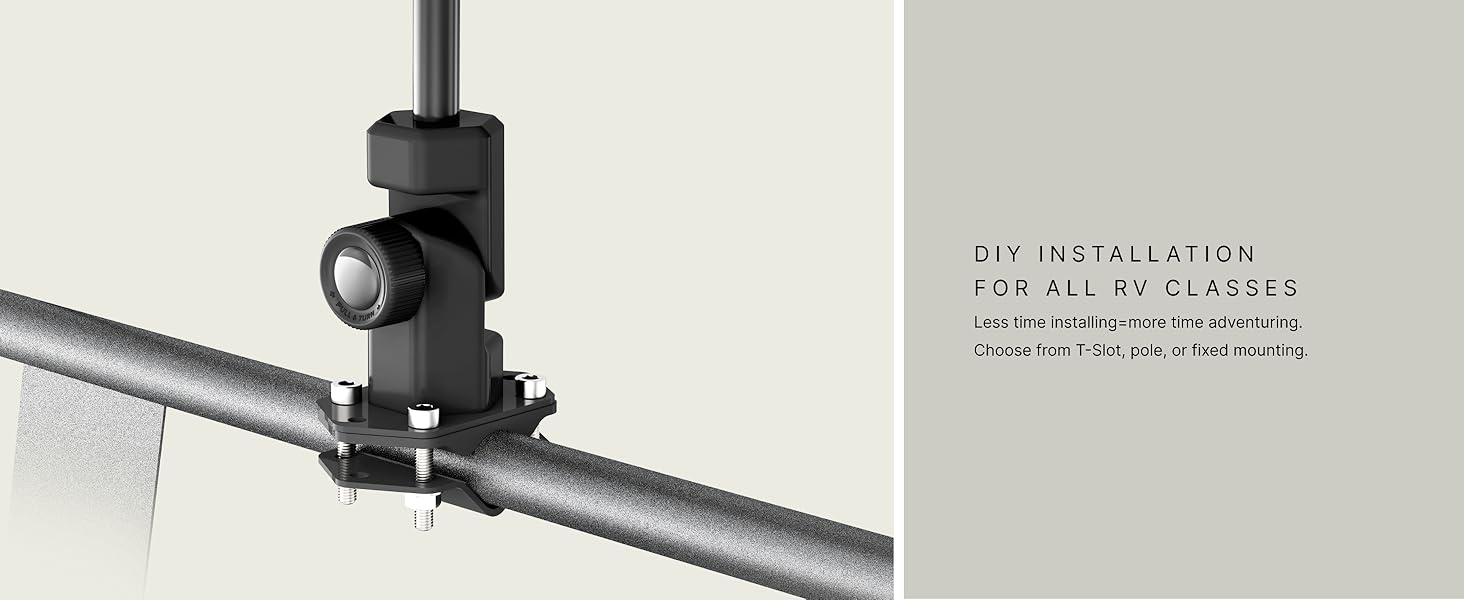
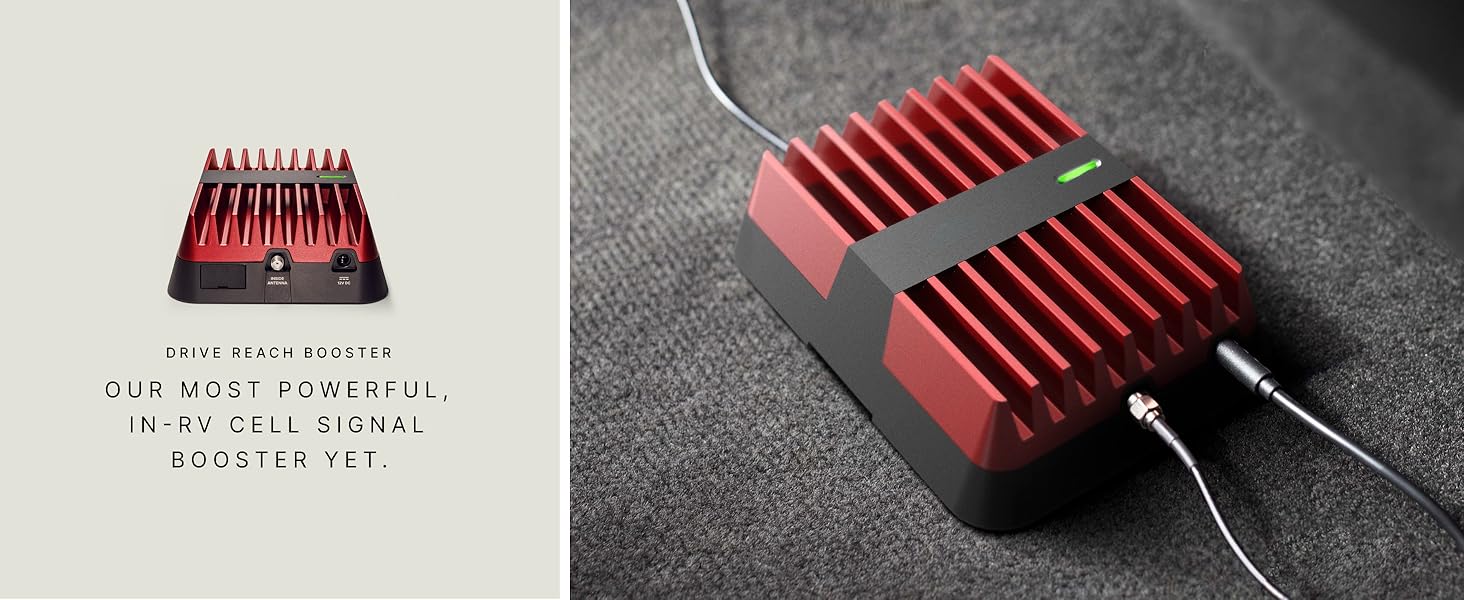
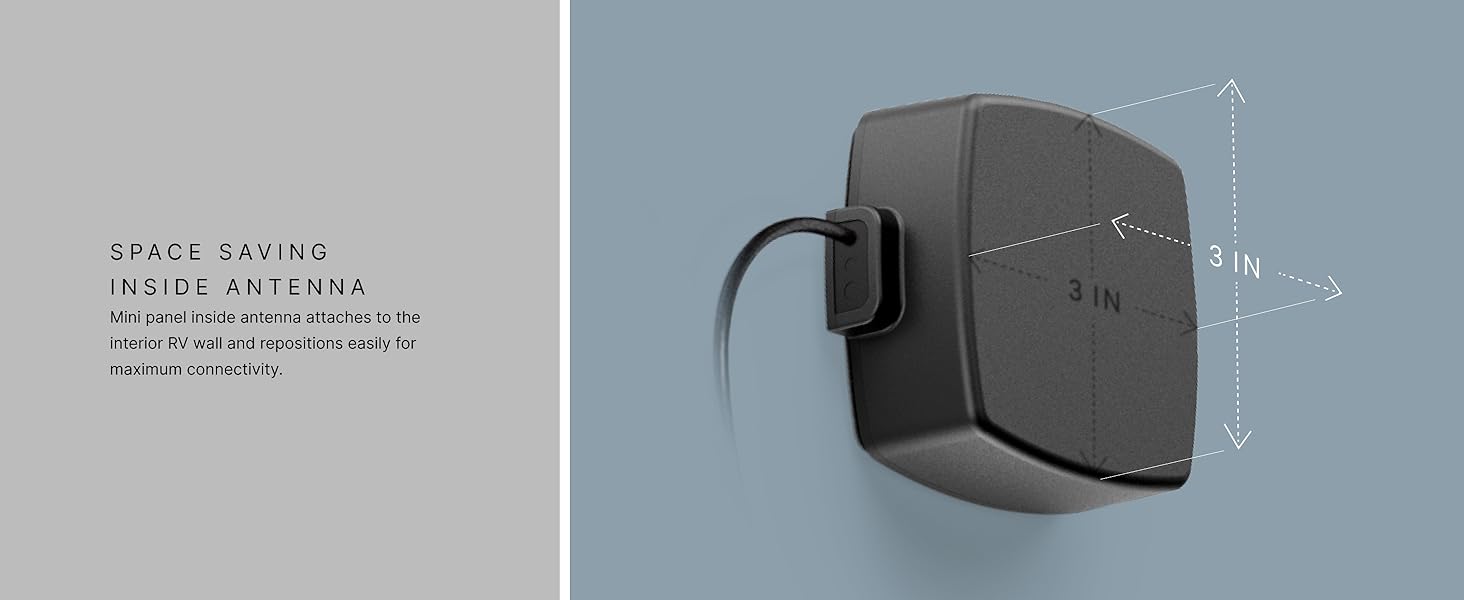
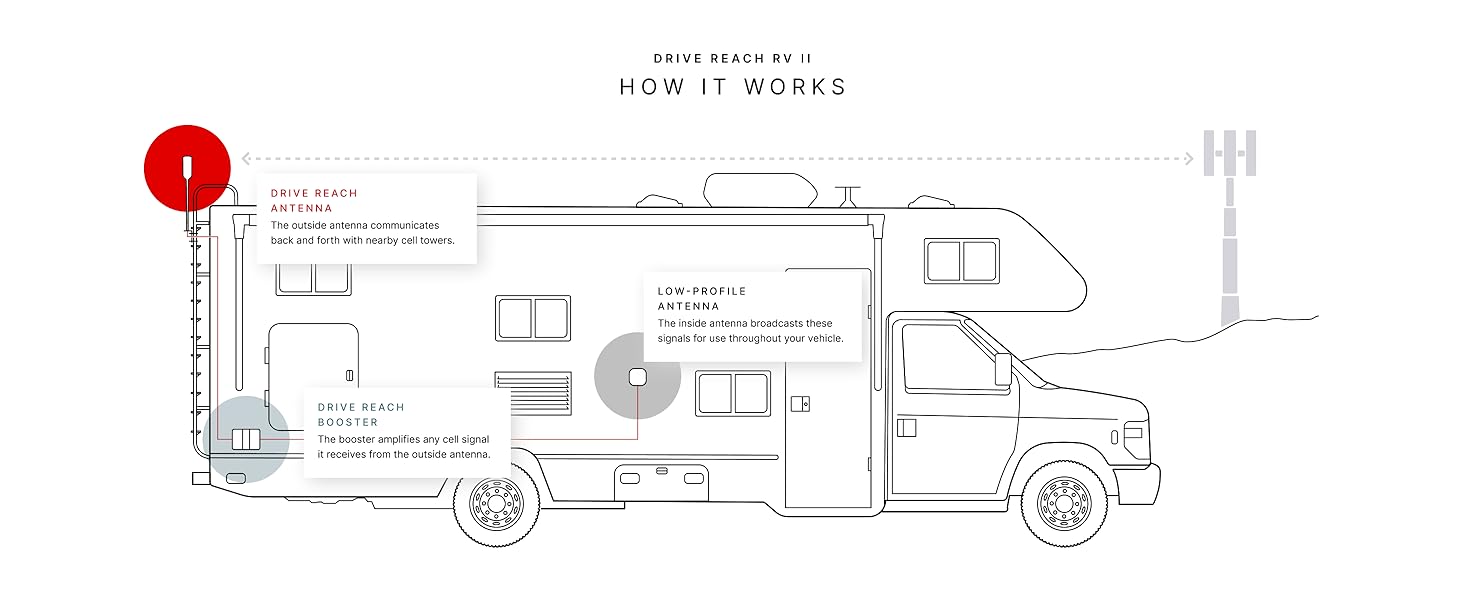

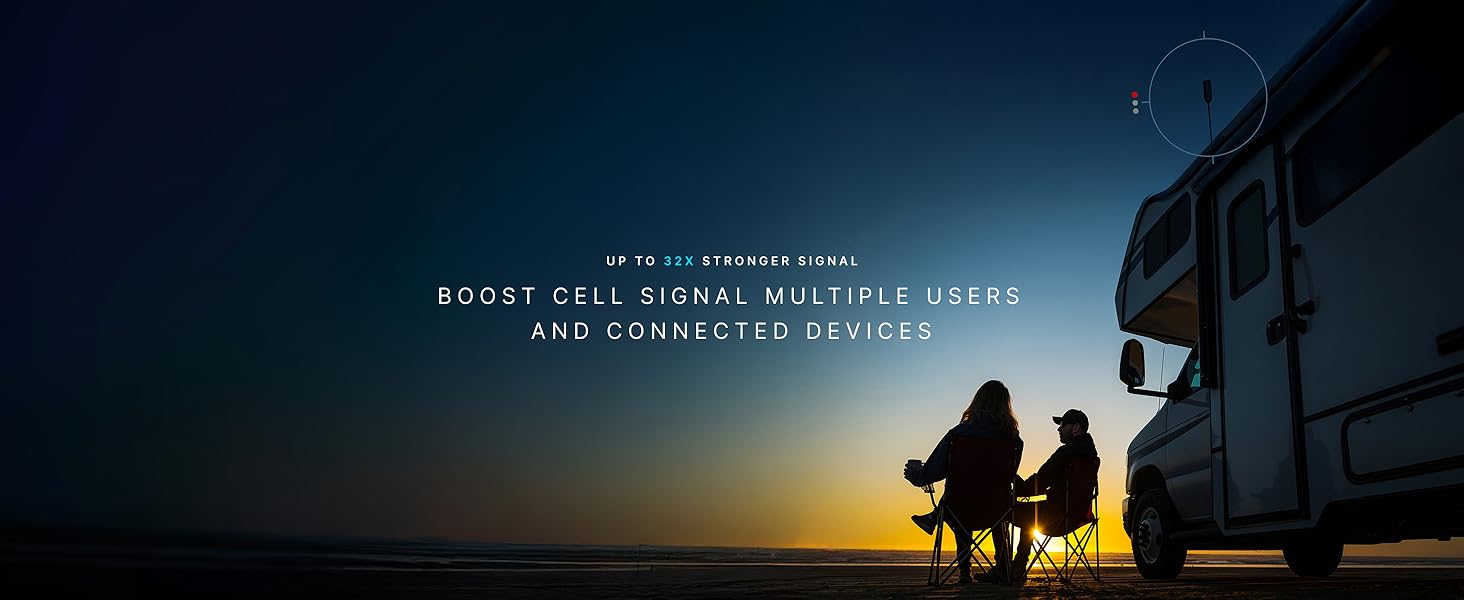

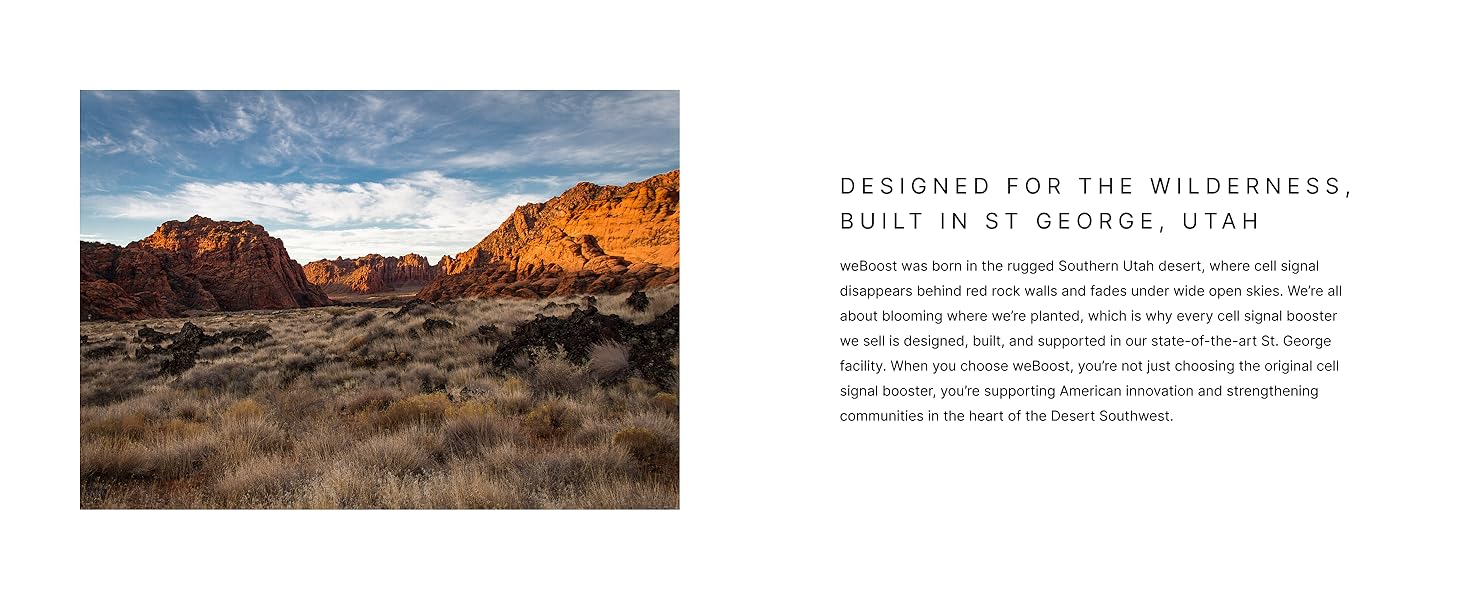

Durable outside antenna | Enhances signal reach up to 3X the distance from the nearest tower, reducing dropped calls by up to 90%.
Versatile mounting bracket | Adjusts 180° in both directions, and allows owners to install the outside antenna using T-slot, pole, or fixed mounting.
New cable entry cover | Supports optimal antenna placement and direct cable routing into the RV.
New flexible 25-foot cable | Reduces attenuation for stronger signal and easier routing.
New powerful mini panel inside antenna | Provides a higher signal gain to boost all wirelessly connected devices in the RV. Directional power from the re-positionable inside antenna concentrates the signal in the areas where it is needed most.
Updated power supply options | Allows owners to choose between AC/DC wall power and hardwire connections.
Reviewer: dr t
Rating: 5.0 out of 5 stars
Title: [UPDATE] Actual customer here and this thing works well on Verizon, not so much on T-Mobile
Review: I hate long reviews, and I especially hate paid or product sponsored reviews. I just don’t trust them. So here’s a real human customer putting the important details up front.The Weboost destination RV actually works. And so far, it works really well! It took my Verizon data speed from 0.5mb down and up to about 4-5, sometimes 9mb. I’m actually kinda surprised (I’ll explain why below). T-Mobile though is actually slower, less than 0.2mb (I’m curious if they throttle boosted signal—again, will explain below). It’s easy to install, but takes a little time and attention. The box has a ton of little boxes with images telling you what’s inside each. I bought some 1.5″ velcro straps from Home Depot to secure it to my Airstream awning and, the best part, is I was able to wire the external antenna to my external satellite coax on my Airstream allowing me to avoid putting wires through windows and doors. Now, the booster and antenna are nice and tidy in my overhead storage.Ok, now for the long details…I’ve been on the road now for over a year since March 2020, camping around the lower 48 states to deal with COVID, while working remotely for a university. I live and breath by my cell service to connect to a dozen or more meetings and classes a week. During my tour, I’ve figured out how to find the best physical views and cell service. I knew I’d need a “boost” sometimes so I bought the Weboost Drive Reach in the beginning of my trip in 2020 and it was complete and total garbage. It never worked for me and in fact depreciated my signal and data speed. I was incredibly upset.I learned an important lesson about boosters through this though. Basically, your phone has multiple in and multiple out (MIMO) antennas. My laymen’s understanding is that each of those antennas each draw in different speeds and add them up to give you the best signal and speed possible through your phone. Imagine this is like your two ears–whatever is in earshot of you gets picked up and processed in stereo and with greater detail. Weboost turns your MIMO antennas into one solo antenna and boosts that in and out signal to your phone. So it’s like covering up one ear while putting a megaphone to the other. Again, I’m not an expert and I’m sure I got some of that wrong, but that’s my sense after some research. In the end, you won’t get the benefit of multiple antennas and likely won’t get blazing speeds using Weboost (speed of course depends on other tower factors and frequencies). If you want a MIMO external antenna, you need a mobile hotspot with two antenna ports and then you can buy an external antenna to help pick up signal. This is more passive and is not “boosting”. I wish Weboost had a MIMO option, that might be pretty rad but I’m sure there’s a reason that doesn’t exist.Also, the Drive Reach is omni directional so it may struggle with bouncing between towers, maybe hurting your chances of keeping a good connection. The Destination RV requires directing your external antenna to a general area where the closest tower, which helps maintain a direct connection.Lastly, and this is the kinda deceitful part by not making this a big BOLD warning about boosters in my opinion, YOU HAVE TO HAVE AT LEAST ONE BAR OF SIGNAL BEFORE BOOSTING FOR IT TO WORK!!! If you can’t open a webpage without a booster, your booster likely won’t help you at all. This was a biiiiiig revelation to me and hoepfully saves some people grief when deciding on whether to get a booster.Because of these issues and failed attempts with the Drive Reach reducing data speed, I threw it in a box never to be used again. Huge waste of money. From then on, I relied on being close enough to a tower with my phone to do my work.Come 2020, I found myself continuing my nomad life in my home state of California, which has decent signal in some areas but not great signal in a lot of areas I wanted to be in. So, I hopped on Amazon to see what’s been developed since the Drive Reach and I found the Weboost Destination RV. I figured it likely wouldn’t work because of my experience and thought, what would it hurt to buy it and just return it if it’s a dud. I also read some poor reviews of their previous version of the RV destination and expected the worst.Man, was I wrong, thankfully! This thing really impressed me! I had it set up in about 30 minutes, extended it 25′, pointed the external blade antenna to where I thought was a tower and low and behold I was getting two bars of 5g instead of one LTE and about 5mb of signal (side note: bars sometimes don’t matter, I’ve gotten 70mb up and down on one bar of signal without a booster in some really remote areas likely because few people were using that tower). After testing the signal and speed a few times while trying to direct the external antenna, I was able to get what I think was maximum speed possible. After doing these tests while directly connected to the antenna and booster with the included cables, I decided to give a shot at trying to hook up the coax to the external satellite coax box towards the rear of my 2017 airstream, which has internal rg6 cabling built in, and it worked just as good as the new cables out of the box. I was very excited about that! Super clean setup (I’ll add pics later when it’s not dark).When I started my journey, I only had T-Mobile. But, because I was in a lot of places and the fact that each mobile carrier does better in some areas and worse in others, I opted to get Verizon on my iphone 12 pro (probably my suggested service if you do what I’m doing), T-Mobile on my iPad pro, and AT&T in my Toyo Tacoma. The Verizon boosting did great with the Destination RV boost, but the T-Mobile boost failed miserably (haven’t tried AT&T yet). I’m starting to wonder if my initial Weboost woes were due to something related to T-Mobile throttling speeds when it senses it’s being boosted? My current iPad with T-Mobile on the Destination RV booster is operating at about 0.2 mb, which is worse than off the booster and the same when I was using the Drive Reach. Sadly I lost the Reach in my travels and I’d test it with Verizon if I could.I’m really glad this thing is working at least on Verizon! I’ll update with pics and a review after a few weeks and tests.[2 month update]Upgrading to 5-stars. It’s still going strong and has allowed me to work weeks at a time (zoom calls, teaching, etc.) in spots that I definitely wouldn’t have been able to work prior to getting the weboost. Dialing into a tower can be tricky, often I try to estimate where the closest tower is and then do several tests till I get optimal speed. I usually do small turns, run a test, do another turn, test, and keep doing that till I find the lowest and strongest signal. I mounted a compass on it to help me keep track my positions. Even with one bar improvement, I really increased my speed.I’m not sure what’s up with T-Mobile but I think it’s something on their end, hopefully it’s just me, but I ended up dumping them all together and going with Verizon.
Reviewer: Austin Berry
Rating: 4.0 out of 5 stars
Title: Good easy kit, boosted call signal, no data gains
Review: EDIT: After using continuously I have been more impressed with the ability of this unit to boost low signal to allow calls and texts to go out as well allow me to turn on my hot spot and reliably steam better.Quality components and kit. Easy setup for my truck camper. I mounted the antenna with provided hardware on the ladder, ran the cable through existing antenna gland, spliced into existing 12v DC power supply of camper so I could run unit off my 12v Lithium batteries. Plugged everything up and it works immediately; you will see an instant boost in your bars on the phone and when measuring the dbm in your settings. Mine at my home location went from -97dbm with no booster, to -77dbm with booster and phone within 3ft, to -40dbm when placing phone directly up against the inside antenna. I’ve found that the signal boost area is very small and to get maximum signal your phone has to be practically touching the unit or leaned up against it. I took away one star because we got no more download or upload speed increase from the booster whatsoever, all data speeds were the same when measured with unit off, unit on, and unit on with phone placed against inside antennas of unit. Don’t expect to be able to stream Netflix after getting this but you should be able to make a call with out dropping. All in all a good booster kit, a little pricey for the results you get, we will see how it performs further out in the woods soon.
Reviewer: James U.
Rating: 5.0 out of 5 stars
Title: Disregard phone signal bars. Use a Speed Test
Review: Received the Destination RV kit by Weboost, From amazon this week. Been looking into this product since a year ago, and even saw someone in the state park who was using it! It was his first trip out with it and hadn’t learned much about it or even tried to aim it yet, so I couldn’t rely on his testimonial.I set mine up in the back yard the day after I got it, and mounted it to a picnic table, like I will be in the campsites. Hooked everything up and it took off. The reason why I opt to not mount it to the C-class RV, is that I will never know which site I will be backed into, but DO know which tower I will be connected to at that particular PA state park in the mountains, and what direction it is in. Therefore sometimes I would otherwise be aiming the outside antenna “across” my entire RV, and sometimes away from it. At first I wasn’t sure if the ground-mount flange foot and the top of the picnic table would be enough distance apart (32″) to be stable. So I hammered in 3 spikes (3/8″) just a couple inches into the ground so the mount would not slide sideways. Then I c-clamped an 18″ piece of 2×6 lumber to the top of the picnic table. I hole-sawed a 2.3″ hole (was probably 2-1/4 size) into one end of the 2×6, and slid the mast’s bottom section through it, to the robust ground flange. I was told the pole was 2-3/4″ diameter (bottom section) but when I measured it with calipers it was only 2.3″ diameter. I was also told the mast weight 12.5 pounds, but I weighed it at just under 8 (7.8) I was pleased about that, as even in a good breeze, this the antenna (with only .5 square feet wind loading) did not sway but an inch or two. No signs of pole stress or bending. I really though I would need to have the 2 attachment points 4 feet apart like I read. Totally not necessary. Ground flange did not try to shift sideways at all. Very sturdy for just a c-clamped piece of lumber 32 inches from the ground base. Now I just plan to spin the picnic table longways in the direction of the tower, and face both antennas away from each other, placed on opposite ends of the table. If I want to operate the booster inside the RV, I’ll just drag the picnic table to the front end of the RV, and jack in the antenna through the RVs outside RG-6 cable inlet. I have to look into how it is interconnected with the tv’s roof antenna and antenna amplifier inside the coach.My results exceeded my expectations. I recommend wrapping a piece of temporary masking tape around the mast, just above where it slides through the 2×6. Mark the 2×6, then make tick marks on various places on the masking tape, lining up with the 2×6 mark. This way you don’t lose track of which rotation angle gave the best results. Also, I don’t think the pointed direction of the yagi antenna up 25-feet is where the strongest signal radiates. I used a compass and a cell-tower map and didn’t get the strongest signal in the expected direction, but did about 1/8 of a turn away. Of course that could be the magnetic variation here on the east coast of 12-degrees between magnetic north and map north. The west coast is 12-degrees off in the opposite direction, and the center of the country should match map north.Overall I was VERY pleased with the product. As an amateur radio operator for the past 45 years, I realize the importance of antenna height with line-of-site radio frequencies. I’ve read many reviews that claimed that “you can’t boost what’s not there”. This is true, but you weren’t measuring signal or bars from 25 feet up, but merely there on the ground. I assure you there is more signal 25 feet higher. Not to mention the benefit of antenna gain, and directional gain, and rejection in other directions.Another thing I observed, is the stronger bars you now receive now is because you are very close to the indoor antenna? THAT antenna is what determines how many bars or dBm reading you will get now. After all, that is what your cell phone is receiving now. Try walking away from the indoor antenna 5, 10, 15 feet away and farther. You will see your cell phone’s dBm signal (or bars) gets worse. That means you’re just very close or far from a new transmitter now, your booster’s indoor antenna. A more accurate comparison is to run a speed-test and latency test with the booster, and then with the booster powered off. Bars mean nothing now, so don’t use that for a comparison. Every review compares bars while using the booster. That is in NO way a comparison now.My wife is a nurse who works from home, and last year she had to attend a zoom meeting while on vacation from that same PA state park in the Pocono mountains. We had to drive out of the park to get a good enough signal a couple of miles away in order for internet speeds to support zoom. It seemed as if anything over 1-2 Mbps was all that was needed, but we didn’t even have that in the park. Now should not be a problem. I have seen 1 Mbps and less (non-existent) boost to 10-15 Mbps with the booster on a 4G tower, more than enough to stream or do anything. I am VERY impressed with this product. Cant wait to use it on the road.Another thing to look into, is “Prioritization” by cell providers. When a cell tower is overloaded with traffic, how do they treat users by another carrier who merely Rent the tower from another carrier? How does the provider prioritize Pre-paid vs. post-paid subscribers? How do they prioritize traffic with Weaker signals, or even varying data plans? This may explain why certain times of day vary performance. Just something to read up on. Verizon calls it “Network Management” now.So far I DO not regret this purchase, at all! This product and a good tower mapping app (like Cell Mapper) will prove you are connected to the towers you are aiming at.Sorry to be long-winded.
Reviewer: Tazz
Rating: 5.0 out of 5 stars
Title:
Review: I was not expecting such a difference. Wow! my iPad before was always saying I wasn’t connected to the internet now with the Weboost all my bars are showing. I know bars don’t mean much but my download is now 90.5 mbps and my upload is 11.2. This is night and day for us. We have a 25foot airstream we have the front bedroom and rear dining area. We attached the pole for the antenna to the front frame of the trailer. This is certainly one of our best buys thank you Weboost we love this product.
Reviewer: Patrick
Rating: 5.0 out of 5 stars
Title:
Review: Awesome! Great item I was going to get the truck one for almost $150 more but the truck package did not come with the good antenna and with the mega cab the cable would have been short for the method of install I was planning. I have used it for a few months not and it has been great.
Reviewer: Jason Gray
Rating: 2.0 out of 5 stars
Title:
Review: After leaving feedback and not getting any response I thought I would post a review.The quick setup and test I did in my driveway was successful. I noticed a 40-50 dB boost in signal, I’ll do further testing when we go camping in a couple of weeks. So that is not the reason for a low rating. When I was unboxing the various components I noticed things didn’t seem like “new”. There were empty bags, seals on a box was cut, the power cord was not neatly tied up as you would expect, and on the installation manual is what looks like a date “6-30-22”. So I’m getting the impression that this unit was open and used. Which I’m not happy with, it was advertised has “new”. If it was posted as “open box” and priced according, I wouldn’t have an issue. But the fact that they are selling it has “new” has made me less confident in the long term durability of the booster. It has me considering returning the item.
Reviewer: Price
Rating: 1.0 out of 5 stars
Title:
Review: I bought this as I need to make and receive calls while camping, and it’s cost me a lot of money. Worked just fine for the first 3 weeks or so, then either an issue with the power cord or booster. Seller passed the buck back to the manufacturer, who couldn’t be more useless in dealing with. Promised me a replacement part a month ago that hasn’t shown up, when I inquired, they told me they didn’t know when they would send it due to global shipping delays. In the meantime I haven’t been able to join my family camping due to my work requirements.Stay away from it, it’s not worth the risk.
Reviewer: Tiago
Rating: 2.0 out of 5 stars
Title:
Review: Had to return it since the telescoping pole would not lock itself, had thrown out the packaging before the test and had a really hard time finding a new box for it, did not get to test the unit

